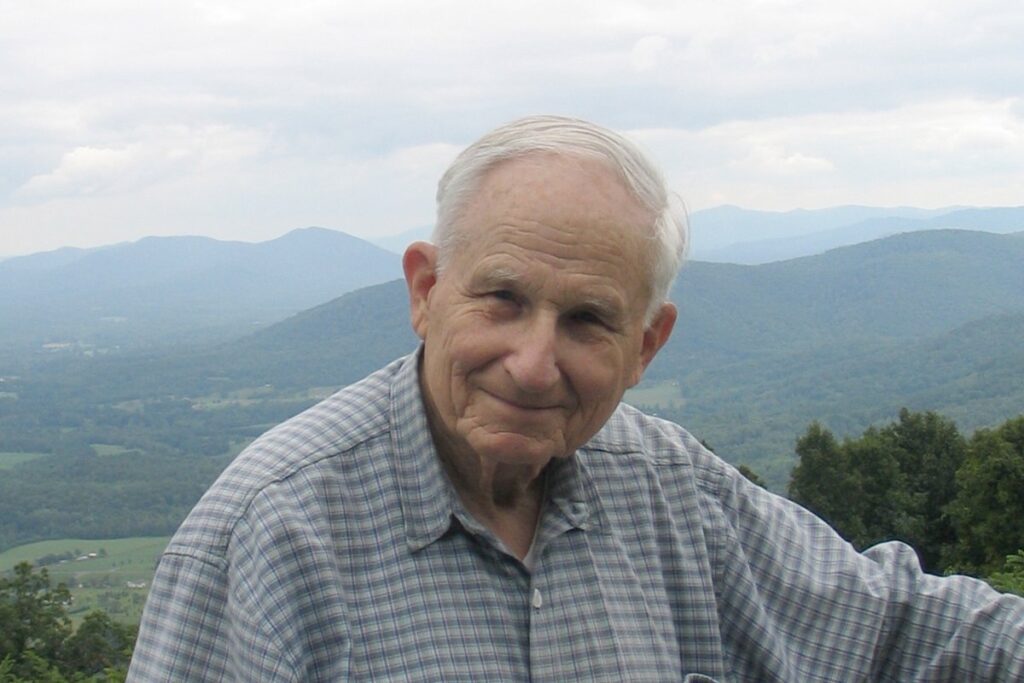Paul Sebring, first Haystack Observatory director and contributor to radio astronomy, dies at 102
- February 4, 2021

Former and first MIT Haystack Observatory Director Paul Brown Sebring died Jan. 3 at age 102 in Charlottesville, Virginia.
Born in 1918 in Washington, Indiana, Sebring graduated from Purdue University in 1940 and joined the engineering department of Zenith Radio Corporation. During World War II, he was invited by Professor F. V. Hunt of Harvard University to join the Underwater Sound Laboratory, which developed anti-submarine devices and guided torpedoes for the U.S. Navy. He received the Naval Ordnance Development Award for his work there, and was awarded five patents for novel circuitry. After the war ended, Sebring continued this work at Pennsylvania State University until joining MIT Lincoln Laboratory.
Sebring was the first director of MIT Haystack Observatory, serving from 1970 to 1980. He joined Lincoln Laboratory in 1952, and led its Space Surveillance Group (Millstone and Haystack) from 1958 to 1970, when Haystack became a radio/radar astronomy observatory open to the scientific community, under the Mansfield Amendment. He was the site supervisor of the Haystack Facility from 1964 to 1970.
During 1961–64, Sebring was assigned to Project PRESS (Pacific Range Electromagnetic Signature Studies), and managed the group that installed and first operated the radar/optical instrumentation (now known as KREMS) on the Kwajalein Atoll in the Marshall islands.
Sebring contributed significantly to the history of radio astronomy at Haystack and Lincoln, and elsewhere. As the first Haystack Observatory director, he coordinated and enabled the continued operation of the facility with National Science Foundation and MIT sponsorship in the wake of the Mansfield Amendment to the Military Authorization Act (1969), which prohibited the use of Department of Defense funds “to carry out any research project or study unless such project or study has a direct and apparent relationship to a specific military function.” Defense-sponsored research continued at Lincoln Laboratory, and non-defense-related research was made separate and assigned to the radio science-focused Haystack Observatory, established in 1970. Sebring also established the Northeast Radio Observatory Corporation, an interdisciplinary group of radio science research institutions.
After retiring from MIT, Sebring held positions with the Science Museum of Minnesota, the Harvard/Smithsonian Center for Astrophysics, and the National Radio Astronomy Observatory (NRAO), retiring from active work in 1988. At the NRAO, he worked on the development and construction of the Very Long Baseline Array.
In 1947, Sebring married Irene Anna Jedrziewski, who died in 2011. He is survived by their six adult children and five grandchildren. The family remembers how he enjoyed riding his Lambretta scooter the opposite direction from most commuters, heading toward Haystack from their Concord, Massachusetts, home. Sebring passed his deep love of science, engineering, and music on to his children, who are all professionally engaged in these fields.
Most Viewed
More
- AandE
- Allegheny
- Books
- Celebrities
- Celebrity News
- Editors Picks
- Health Now
- Local
- MLB
- Monroeville
- Most Recent Obituaries
- Movies TV
- Murrysville
- Music
- News
- News & Advice
- NFL
- NHL
- Norwin
- Penn Hills
- Pirates
- Pittsburgh
- Plum
- Politics Election
- Sports
- Steelers
- Theater Arts
- Top Stories
- Tribune Review Obituaries
- US-World
- Valley News Dispatch
- Westmoreland
- World